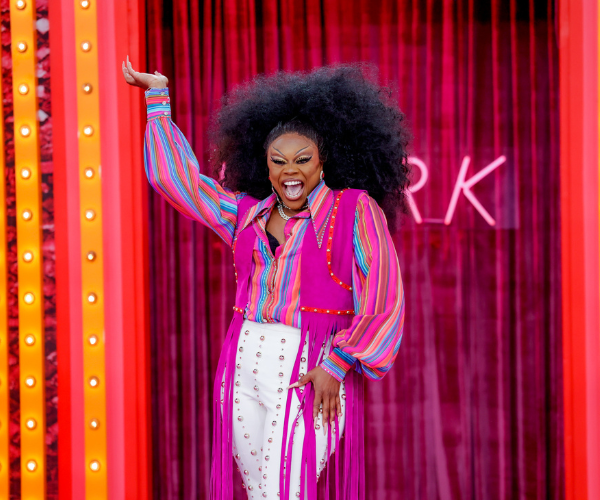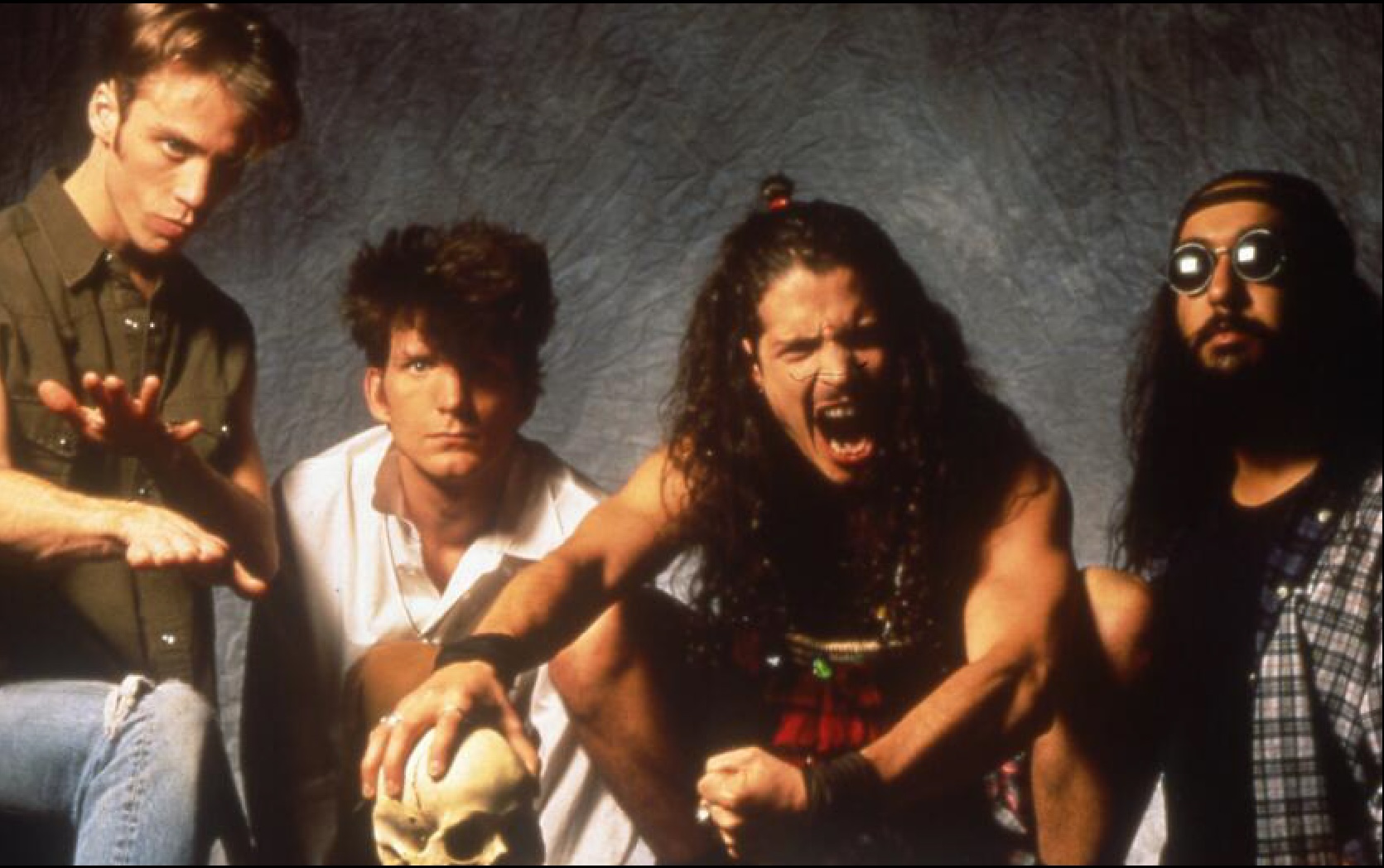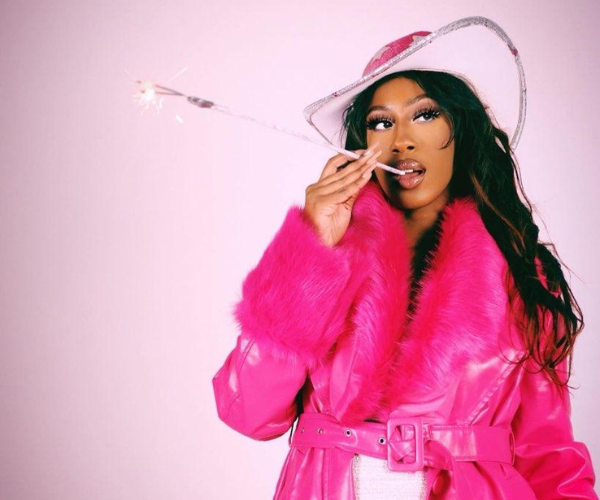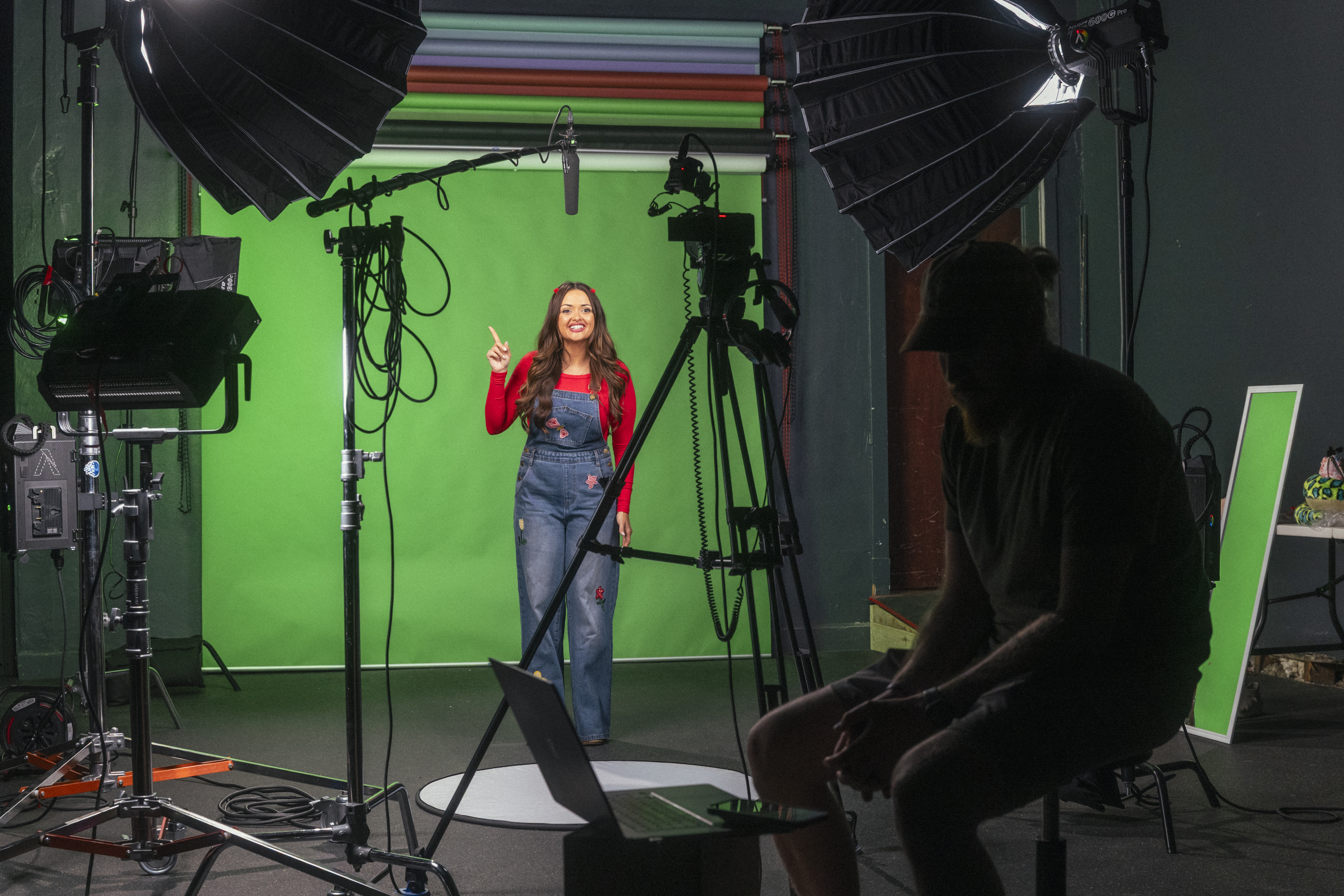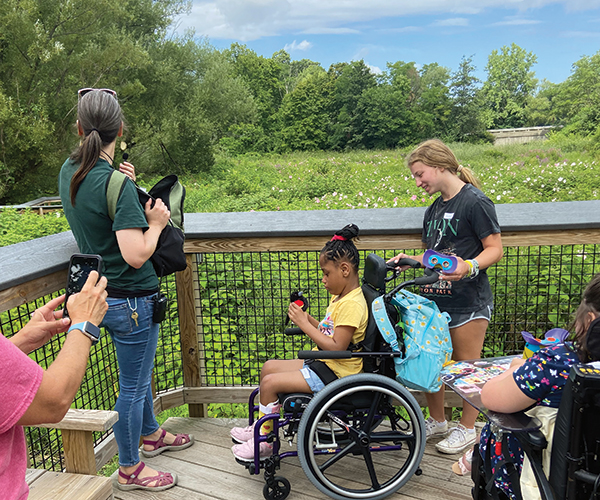To The Rescue: A Tribute To A Beloved Cleveland Comic Shop
by Sheehan Hannan | Oct. 12, 2020 | 12:00 PM
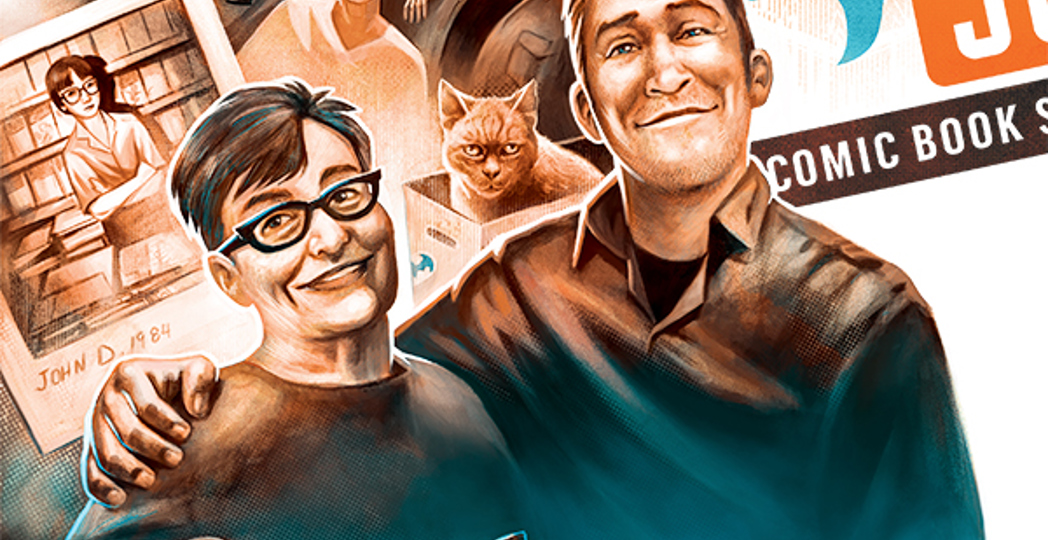
PHOTOS BY TIM SWITAKSKI, HEATHER LINN YOUNG AND LAURA WIMBELS
The first time I went to Carol & John’s Comic Book Shop, I noticed the table immediately. It’s a big gray one, right in the center of the shop, and laid out on top was one of the more impressive bounties of comic books I had ever seen: DC comics, Marvel comics, Image comics, Darkhorse comics, graphic novels. There were plenty of superheroes, Superman and Batman and Spiderman, but Archie too, along with Buffy and some new titles I had never heard of. I looked at it and thought that this was surely paradise.
Along the walls were other sacred signs of nerd nirvana: a big painting of Superman and Batman and the rest of the DC gang water skiing, a Captain America shield, a framed portrait of Green Arrow. As I walked further into the store, I noticed shelf after shelf of carefully alphabetized graphic novels. There was a big rack of action figures too, and in the window was a custom-made orange and blue Carol and John’s neon sign. But the surest indication that I had come to a truly great comic book shop was coiled atop some boxes of Marvel back issues: a fuzzy orange furball named Winston, taking a nap.
A minor twist of fate brought me here. I came late in life to comics. My wife, Delia, had read them for years. I didn’t until fall 2018 when I began working on a profile of comic book writer Brian Michael Bendis for this magazine.
Bendis had just taken over writing Superman, and curiosity drove me to delve into the character’s back story. I read books about how Superman and the modern superhero comic were both created in Cleveland, and went deep on the Superman comics themselves. I found something special in those pages, a love I still find difficult to explain.
That admiration drove me to seek out more and more comic books, spending sometimes $50 or more a week on stories and gobbling them up whole. Delia and I got those comics at another shop, which could never seem to get new books in on time. Sometime during that winter, I got fed up. I knew Carol & John’s in the West Park neighborhood by reputation, and we decided to barrel a half hour from the East Side to get those precious stapled-together pieces of paper.

What we found on that first visit was our version of heaven. We scooped up books off the big table for several weeks, until one evening Jim Guilliams or Ben Joines-Mundy, the two full-timers, cornered us and recommended we open a pull list, a list of books they could set aside for us. We took to making the drive across town every week. Sometimes, we would stick around the counter to chat with Guilliams or Joines-Mundy or one of the part-timers about the latest Superman or Criminal or Hawkeye. After a handful of visits, they knew our names and we knew theirs.
The shop, I learned, has been that friendly from the beginning. It started as Carol’s Comic Book Shop, back in 1990, as the brainchild of Carol Cazzarin and her son, John Dudas. It has been owned for the last three decades by the mom-and-son team. But it’s not only the shop’s longevity that has set it apart, says Cazzarin, who, though still an owner, is semi-retired. “The majority of the customers become more friends and family than customers,” she says. “We like for you to come in and buy here, and that’s fine. But you come in, sit around and talk about your kids, your job, your art, whatever.”
Discarding any sense of journalistic objectivity here, I can attest personally to feeling like family. Others can too. “The sense of community is really big there,” says Curtis Phillips, who has been buying comics at Carol & John’s since the beginning. The shop sent fruit baskets when his mother passed in 2003, and when his wife was ill. Phillips returned the favor when Cazzarin had health issues. And in visit after visit to the store, Phillips watched his sons grow from children into men. “While my sons don’t read comic books, they accompanied me on my weekly trips to the store,” Phillips says. “(The shop staff) still ask about them sometimes.”
To be plain soppy about it, that’s the kind of place Carol & John’s is, even buffeted these days by the upheavals and uncertainty of the coronavirus. After two months of the world turning the crazy to 11, of working from home, of letting my wife cut my hair, of a looming invasive surgery, of leaving my apartment only for very select reporting assignments and the grocery store, of not reading any comics, I needed some comfort. When Ohio’s reopening came this May, Carol & John’s was the first place I went.
It was a curious time. This was supposed to be a triumphant year, the shop’s 30th anniversary. But instead the shop had been closed for two months. New comics, after being on hold, were just now being published again and the shop was open. I took it as a sign that maybe this dark world could get just a little bit lighter. The shop had even gotten a shoutout from Gov. Mike DeWine for its social distancing guidelines, barriers, masked employees and free Marvel-themed masks for at-risk visitors.
I put on my own mask in the car and walked in, half expecting things to be different. Everything was different now. Indeed, for safety reasons Delia had stayed home. There was a big plastic barrier in front of the cash register. But Joines-Mundy was there behind the counter, like he always is.
“Hi Sheehan,” he said, like he always does, but this time through his mask. “How you been, man?”
I lied and told him I’d been OK. He didn’t pry, and instead reached into the file folders and pulled our comics — Action Comics No. 1021, Lois Lane No. 10, Aquaman No. 58, Superman’s Pal Jimmy Olsen No. 10, and some others I don’t remember — and laid them on the countertop.
Seeing them, I thought: How many times have I stood here? How many times had I been excited to read stories like these? I picked them up, paged through to glimpse the colorful illustrations, held their weight. They were small, very ordinary things. But they made me feel normal for the first time in months.

The Carol & John’s origin story begins not in Kamm’s Corners, where the shop is located now, but across town in Slavic Village. There, as a child, John Dudas encountered comics for the first time. There was a big stack of them in his great-grandfather’s house, and whenever he would visit, he took to paging through them. His great-grandfather was from Poland and used the comics to learn English. To him they might as well have been a cheaper version of a textbook. But to Dudas, those little squares contained entire worlds.
Dudas began to seek out comics on spinner racks at grocery stores, 7-Elevens and pharmacies. Eventually, looking for more, he picked up a comics price guide from the library, which contained an ad for a comic book shop called Collector’s Warehouse. Dudas went as soon as he could. “That impacted me. It blew me away,” says Dudas. “I was trying to hunt these things down at drugstores for years, and then all of a sudden it was like, ‘Here’s a store.’ ”
On weekends, Dudas’ grandfather would drop him off at Collector’s Warehouse in Parma for an hour or so while he went off to get a beer, and Dudas would devour every comic book he could. He was always a Marvel kid, this being the 1970s, and he gravitated toward the shield of Captain America, the snicking claws of Wolverine, the twanging bow of Hawkeye. But he also developed a diehard’s love for an underappreciated DC Comics character named Starman and followed his many iterations.
“I grew up like any kid, loving Hawkeye and Wolverine,” says Dudas. “But I really like the iconography of Captain America. I like the idea of patriot over soldier, and there’s some great stories in there.”
Then a new comic book shop, North Coast Nostalgia, opened up down the street from Collector’s Warehouse. What he saw at North Coast influenced his later approach to building his own store’s community. Dudas recalls asking North Coast owner Dave Kapelka for an issue of the X-Men storyline “Days of Future Past.” The store didn’t have it, but Kapelka still rummaged around in the back looking for it.
“God, for me, that made an impact, that somebody went out of their way to get what I was looking for,” says Dudas. “I always try to look for stuff in the back now.”
READ MORE: Northeast Ohio Artist Thom Zahler Puts His Spin on Comic Books
Dudas was around so much that, at 11 years old, he started working at the store. He even traveled with Kapelka to comic shows around the country. His mom, who would stop in to pick Dudas up, started working there too. They worked there, manning the counter, stocking books and making customer recommendations through Dudas’ teenage years until, in 1990, they were laid off.
Dudas was 17, had just graduated from high school and was considering a career as a fireman. Cazzarin was 46. But they decided to strike out on their own. Using Dudas’ personal collection of 60 long boxes worth of comics as their starting stock (he kept only his original run of The Avengers), they found a storefront in Kamm’s Corners.
They named it Carol’s Comic Book Shop. Dudas was too young to have his name on the paperwork and, he now confesses, he was a little embarrassed to have his name associated with comics. (They added his name the next year, after he turned 18.)
They opened the shop up on Oct. 28. 1990, putting out the boxes of back issues and arranging the rows of fresh, new comics. “We went around kicking everything off,” says Cazzarin. “And 30 years later, here we are.”
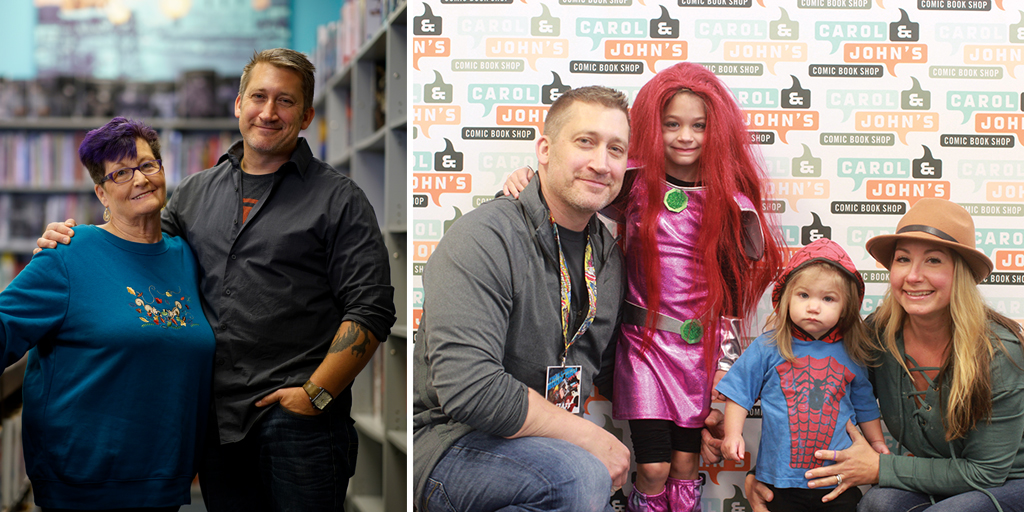
Over those decades, Carol & John’s has accumulated many mascots. By “mascots,” I mean cats. When the shop first opened, in a small space in Kamm’s Plaza next to the restaurant Gene’s Place To Dine, the role was filled by Oliver. He turned 20 human years there. When one day the shop moved into another, larger spot across the plaza, Oliver suffered a stroke. “We always say he felt like he knew who he was,” says Dudas. “He knew something was changing.” The shop cat mantle was taken on by Cloak and Dagger, one black cat and one white cat, for a while.
Then, after the shop moved into its current space a few doors down, the shop cat cape and booties were passed on to Winston Zeddemore, a tabby named for the Ghostbusters character. Dudas, who also works as a Cleveland firefighter, brought him to the shop after he wandered into the firehouse. With an attitude that’s a little more friendly than it is aloof, in the tradition of all the best shop cats, Winston greets visitors to the store with a leg-rub and is open to pets even from strangers.
Winston has appeared in several comics by local artists, and his fuzzy visage adorns the shop’s buttons, stickers and coasters. He has his own Instagram account, @comiccatwinston, appears regularly on the shop’s Facebook page, and when he disappeared for a few days in 2015 it spawned a hashtag and made the news. (He had just strolled to a nearby road salt shed.) “People love the cat,” says Dudas. “If I hold the cat, the Facebook post gets like 200 likes.”
Other than Winston, the store’s success can be attributed to its feeling of openness, and its avoidance of the kind of off-putting nerd-culture gatekeeping that tends to alienate all but hardcore, mostly male comic book lovers. Much of that comes from Cazzarin, who, in an era when she was one of the few women into comics that she knew, made sure the store would be friendly to women, children and people of all ages.
Shortly after the store opened, she noticed that many of her customers were having children, so she distributed kids goodie baskets. She once ran a contest for local artists to design a Green Arrow tattoo, which in the end she got. And from the beginning, she made sure there was enough room in the aisles for people to maneuver and arranged the shelves so that you can see straight through to the back of the store from the front. Even the shop’s discussion groups, parties and Free Comic Book Day festivities are set up to appeal to people of many different backgrounds and ages. They have even been known to commission prints by local comic artists and give them out for free. “We want people to feel safe,” says Cazzarin. “We want women to come in the door.”
Over time, the staff has gotten to know the customers too, and often make recommendations about books they might want to read. John Saris, a longtime customer who has been reading comics since the 1960s, collects mainstream comics such as Batman, but also books featuring Warner Brothers characters and harder-to-find Dell Comics magazines from the pulp era.
“They say ‘Hey Johnny, we just got a box of stuff in and we put it back here for you,’ ” says Saris. “They know what I like. They know what everybody likes.”
READ MORE: Why Isn't Cleveland Embracing Its Comics Heritage?
Dudas and the other staff also keep an eagle-eye open whenever a kid comes into the store, especially when it’s their first time. They look for the wide eyes, and then direct them toward something they might like. Sometimes, they’ll even pull out goodies from the secret stash behind the counter. “If it’s a grandpa and a kid, I’m all over that shit,” laughs Dudas. “I’ll give them whatever they want for free.”
After 30 years of getting kids into comics, Dudas, 47, has naturally done the same with the two daughters he shares with wife Apryl: 9-year-old Zoe and 5-year-old Luna. They have recently started watching CW’s Stargirl, and when Dudas and I met for a socially distanced interview in July, he was already working on a Starman Halloween costume to go along with his daughters’ Stargirls. Though retirement is a long way off, he was thinking about how to keep the shop in the family.
“I don’t want to choose my daughters’ destiny, but if one of them was interested in it, I would definitely encourage that,” says Dudas. “I think owning a comic shop is a good life. I consider it a good life.”

The pandemic shut the shop down for a while, and I caught up with them on Facebook. Dudas cleared his guest bedroom at home and built an entire set, complete with a desk, where he gave “State of the Comic Shop” speeches on Facebook Live, riffing on how the shop was changing to meet the challenge of the coronavirus. They had been through this before. After the 2008 financial crisis, some longtime customers who had been laid off came in to cancel their pull lists in tears. This time, the shop adapted admirably. The staff delivered comics with their cars and auctioned off old issues over livestream. But it was still a relief, at least to me, to be able to walk in the door and be handed a stack of books.
Receiving them, though, was different than before. Now I saw in those $4 comic books the labor that had gone into getting them to me — the risk the printers took to print them, the risk the driver took to deliver them, the risk the staff took to show up to work and hand them to me. It was a risk to even breathe the same air. Making a shop as friendly as Carol & John’s is always a lot of hard work, but the pandemic had added an element of danger. The comfort of being handed those books had always been a gift. Now it was an extraordinary one. I felt a little guilty receiving it.
I took the comics and browsed through the indie racks. After a while, I went to the cash register and slid my comics through the little slot in the plastic divider that had been installed as a safety precaution since reopening.
Joines-Mundy rang me up. We talked about the upheavals with DC Comics’ distributor, and the cuts to Marvel titles. I said I had put off coming in for a few weeks until it felt safe, that I would probably come in every few weeks instead of every week. “Don’t worry about it,” he said, “Everyone’s going at their own pace.”
In my head, I weighed the risks, the dangers. I love this place, I thought, and they’re doing everything right. But the calculus was just all screwy. When would it be really safe, for me and for him? Would things go back to the way they were? Could they ever? When would I be back? Soon, I hoped. But I didn’t know. I didn’t have the heart to say it. I just nodded.
Joines-Mundy slid my bag of comics through the slot. I trotted toward the door.
“See ya later, Sheehan!” he said.
Just like always.
For more updates about Cleveland, sign up for our Cleveland Magazine Daily newsletter, delivered to your inbox six times a week.
Cleveland Magazine is also available in print, publishing 12 times a year with immersive features, helpful guides and beautiful photography and design.
Trending
-
1
-
2
-
3
-
4
-
5

